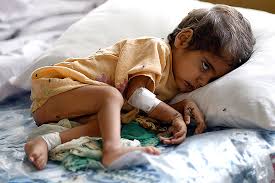A recent study has brought to light a worrying trend in Maharashtra, where over 80% of children aged six to 23 months are found to lack adequate dietary diversity, as per the World Health Organization (WHO) standards. This research, published in The National Medical Journal of India and affiliated with the All India Institute of Medical Sciences (AIIMS), underscores the malnutrition crisis in the state, where one in four children is malnourished.
According to WHO guidelines, children in this age group should meet the Minimum Dietary Diversity (MDD) criteria by consuming at least five out of eight essential food groups. However, the study reveals that more than three-quarters of Indian children fall into the category of Minimum Dietary Diversity Failures (MDDF), signaling a critical public health concern.
The study also highlights a modest improvement in dietary diversity over the years, with the percentage of MDDF children declining from 87% during the National Family Health Survey-3 (NFHS-3) to 77% in the most recent NFHS-5, conducted between 2019 and 2021. Despite this, Maharashtra remains one of the states with a persistently high MDDF rate, exceeding 80%, alongside Uttar Pradesh, Rajasthan, and Gujarat.
In contrast, only 95 of India’s 707 districts, predominantly located in the southern, eastern, and northeastern regions, reported lower dietary failure rates at 60% or below. The disparity between regions underscores the complexity of addressing nutritional challenges across the country.
The study further highlights that female children, those from lower socio-economic backgrounds, and children who do not receive food from anganwadi centers are at higher risk of dietary failure. Children born to younger mothers are also particularly vulnerable. The lack of dietary diversity puts these children at risk for micronutrient deficiencies, which can lead to a host of developmental issues, including delayed motor and cognitive development, poor learning abilities, weakened immune systems, and increased susceptibility to infections.
Dr. Abhay Shukla from Jan Swasthya Abhiyan emphasized the dire situation in Maharashtra, noting that the state has the highest rates of wasting (over 25%) and severe wasting (over 10%) in the country. “Wasting,” characterized by low weight for height, is a key indicator of acute malnutrition and significantly raises the risk of mortality due to infections.
National Family Health Survey-5 data further supports the severity of the issue, revealing that one in three children in India is underweight and stunted, while one in five is wasted. These statistics paint a grim picture of child health in India, particularly in states like Maharashtra, where nutritional programs need to be intensified.
The study’s findings call for urgent action to improve access to diverse, nutrient-rich foods for children across India. Initiatives that strengthen food security, bolster anganwadi services, and promote maternal education could be pivotal in combating malnutrition and ensuring healthier futures for the country’s youngest population.











